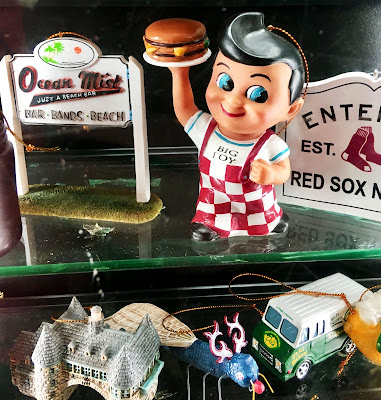- The rule of thirds picture is probably the best shot of this assignment because it has good lighting and nice colors, specifically with the cactus and its little flower.
- The picture that is the weakest shot of the assignment is the multiple shots picture because it has weird lighting and some of the ornaments are cut off, but the main two are not.
- The weakest image can be improved on in future shots by being thought out more to ultimately get more subjects in the frame entirely.
- I used Photoshop for this assignment, specifically brightness and contrast, levels, exposure, vibrance, hue and saturation, spot healing, and color balance.
- I was able to meet the objectives (goals) of the assignment by taking pictures intentionally when I thought it would be a cool shot and taking random photos throughout the weekend and continuing to assign them methods of photography that fit the image.
- Using Photoshop was the easiest thing about this assignment because the functions that I did use were easy to understand and use.
- Taking all of the photos was a difficult aspect of the assignment because eight pictures is a lot to take when trying to make them visually appealing.
- If I could do this assignment again, I would change how I took these pictures and try to make them better by changing the subjects and the angles.
- On a scale from 1-10 I would rate my effort with this project at a 5 because for some of the pictures I took them randomly but for the others I put more effort into taking them and thought they would be good pictures.
Friday, September 27, 2019
Reflection: Composition: How Subjects are Arranged
Wednesday, September 25, 2019
Composition: How Subjects are Arranged
1. Simplicity:
This shows simplicity by the fake plant filling in a lot of the frame with minimal dead space and no distracting elements as it is the only thing in the frame besides the wooden background.
2. Brightness and Sharpness:
This shows Brightness and sharpness by there being good lighting and comparative shadowing on the subject of the fake plant.
3. Rule of Thirds:
This images shows the rule of thirds method by the subject, the small cactus with the small flower, on one of the third lines, specifically the one on the right side.
4. Avoid Bull's Eye:
The picture shown above shows a lack of bull's eye and eye level composition by the angle of the camera being higher than the subject so it shows part of the top of the step ladder. The step ladder is also not in the center of the picture but rather the middle on the bottom.
5. Emphasize Foreground:
The image above represents emphasized foreground by because the horizon line is in the upper-half of the photograph, specifically about 3/4 of the way up.
6. Emphasize Height and Distance:
This picture shows height and distance doe to the fact that the horizon line is in the lower half of the of the photo.
7. Leading Lines:
This image represents leading lines because when you look at the image your eyes follow the lines from the front of it to the back.
8. Multiple Subjects:
This picture shows multiple subjects because there are multiple subjects, the ornaments, in the image.
Contact Sheets:
Wednesday, September 11, 2019
Snap Shot vs. Artistic Photo
The difference between a snap shot and an artistic photo is a snap shot being a photo taken of real life while an artistic photo is set up to look how the photographer wants it to.
Bell Ringer: Photo Responce
I think the photo is important because it shows what some people went to while in the burning buildings and what people must have been thinking during this scary time. This also is one of the only photographs of people dying during 9/11.
Monday, September 9, 2019
Subscribe to:
Comments (Atom)
Reflection: Double Exposure Photography
1. The second photograph is the best shot of this assignment because the lines in between each layer is cleaner. 2. The first photograph is...
-
1. The green plant picture is the best shot of this assignment because it is large enough to be clearly in focus and the background is simpl...
-
1. The sunflower photograph is the best shot of the assignment because it is clear and in focus. 2. The ornament photograph is the weakest ...
-
The texture of this image is bumpy due to the lighting and shadow in between each of the paint bristle strokes, but not rough as the ligh...











